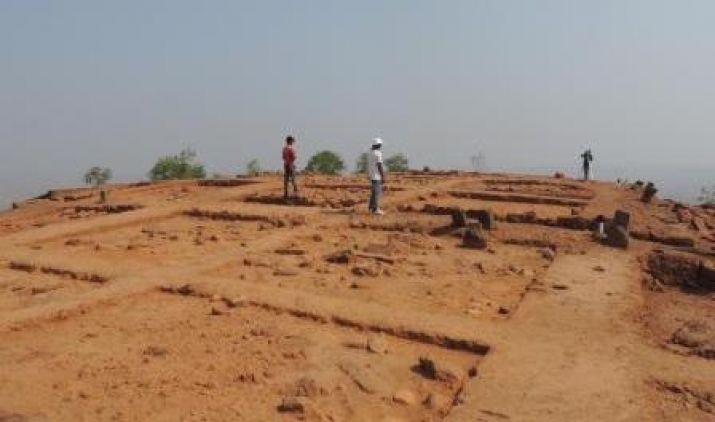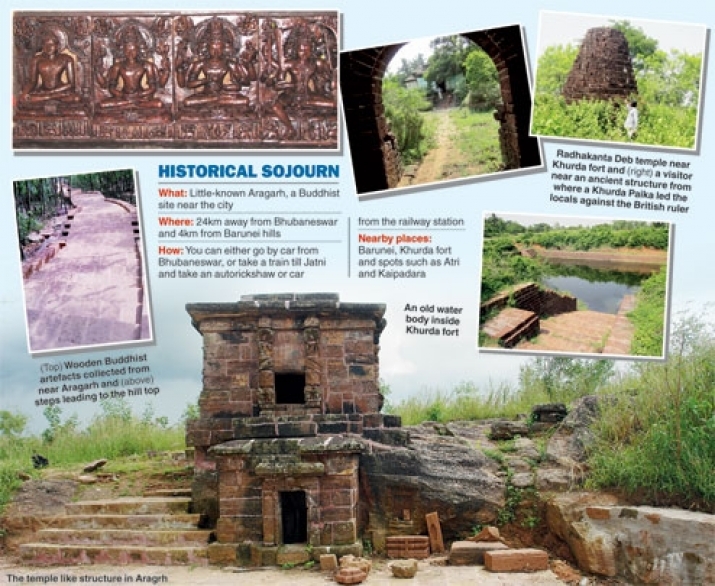NEWS
Archaeological Evidence of Buddhist Settlements in Odisha Reveals Ancient Trade Routes
 View of Aragarh excavations. From orissapost.com
View of Aragarh excavations. From orissapost.comArchaeologists working on excavations in Puri District, in the eastern Indian state of Odisha (formerly Orissa), have unearthed new evidence of ancient trade routes in the area. The team from the Orissa Institute of Maritime and South Asian Studies (OIMSEAS) said recently excavated Buddhist sites pointed to the existence of both maritime and riverine trade routes, facilitating the spread of Buddhism in the region.
While exploring the Daya River valley, the archaeologists encountered early Buddhist sites at Kurkimundia, located on the banks of Daya River, at Labanagiri, and at Aragarh. The archaeologists believe their findings point to the importance of riverine trade to the ancient economy of the region, overturning the long-held view that the sea was the only trade route to Odisha, known as Kalinga in ancient times.
“The Buddhist sites at Kurkimundia, Labanagiri, and Aragarh establish the trade links with South India,” said archaeologist Sunil Patnaik, who heads the OIMSEAS, adding, “Our research proves that the Daya [River] was used for trade in that era.” (Orissa Post)
According to the conclusions of earlier archaeological studies, Jaugada in Odisha’s Ganjam District was the only trade link connecting the area to northern India, and there had previously been no evidence of established trade connections with southern India.
“The latest finding makes it clear that all the Buddhist settlement sites in India were established along the trade routes, like Sanchi, Barhut, Vaisali, and Pitalkhora,” said Patnaik. “Jaugada apart, [there was no evidence to indicate] trade links with the southern states like Andhra Pradesh.” (Orissa Post)
Buddhism first spread to Kalinga from the days of the Mauryan emperor Ashoka (r. c. 268–c. 232 BCE), who ruled almost the entire Indian subcontinent and propagated Buddhism across the region. Archaeological evidence suggests that monks, merchants, and adventurers from India visited Central and Southeast Asia during the post-Ashokan period, which is reflected in the language, literature, art, and religion of eastern India. Kalinga’s significance as a node on the Silk Road has been demonstrated by previous surveys of Silk Road trade routes that linked Balkh and Bamiyan in Afghanistan through the Ganges valley to modern-day Tamluk in West Bengal, before heading south, passing through Buddhist settlements in Odisha.
 From telegraphindia.com
From telegraphindia.comAmong the more significant finds of the OIMSEAS, the Buddhist site at Aragarh, also known as Airagarh, which contains a two-story flat-roofed Buddhist chaitya, or prayer hall, has been dated from the 1st–2nd century to the 10th or 11th century. Under Patnaik’s supervision, OIMSEAS archaeologists have also unearthed a number of Buddhist statues and carvings, including four unusual statues of the Buddha, each with three heads and eight arms holding vajra, or thunderbolts, a mythical weapon wielded by the Hindu deity Indra that also appears in many traditions of Buddhism.
Patnaik expressed his confidence to The Telegraph that the recent discoveries would help to fill in the gaps in Odisha’s history—particularly from the 2nd century BCE to the 6th and 7th centuries CE. (The Telegraph)
See more
Unearthed trade route sheds new light on ancient history (Orissa Post)
Multi-headed Buddha statues discovered in Odisha’s Aragarh hills (Odisha Sun Times)
Central nod to excavate Aragarh (The New Indian Express)
Explore Budhhist relics and beautiful hills (The Telegraph)














